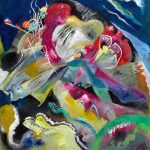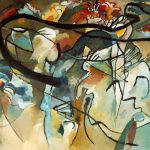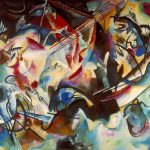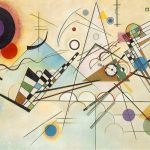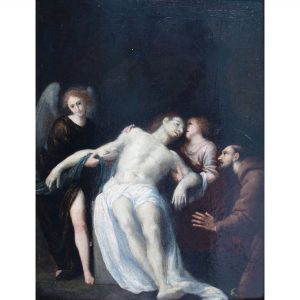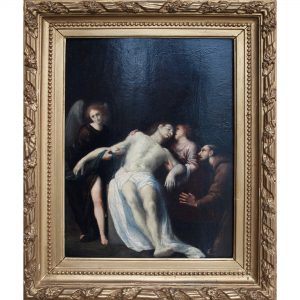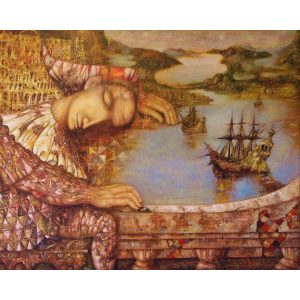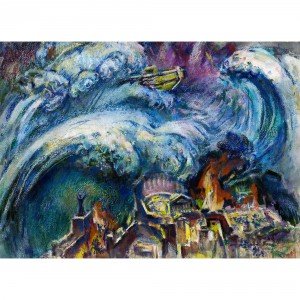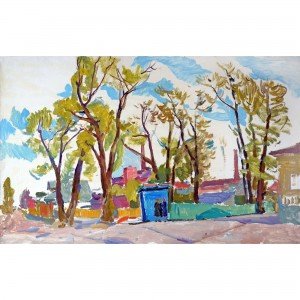Creativity and life philosophy of Wassily Kandinsky: 5 instructions of the artist
“Technically, every piece of art emerges in the same way as space – through disasters.
Creating a work of art – is creating the world.”
Wassily Kandinsky.
Wassily Kandinsky is considered one of the leaders of avant-garde art and one of the founders of abstractionism in painting at the beginning of the XX century. As a lawyer, art was only a hobby of his up to the age of 30, until he saw Monet’s painting “The Haystack”. It was then that he began to study painting (drawing, drawing and anatomy) thoroughly.

The life of the Russian master is a brilliant career of an artist, an engraver, a watercolourist and a theoretician. Kandinsky’s monumental achievements span many artistic movements of the first half of the twentieth century – he was influenced by the Impressionists, Postimpressionists and Fauvists. With his abstract forms and bold colours, Wassily Kandinsky was a revolutionist. Hated by the Nazis, he not only painted, but also taught other artists to think outside the box. He often took part in exhibitions, taught art classes and published his ideas on art theories.
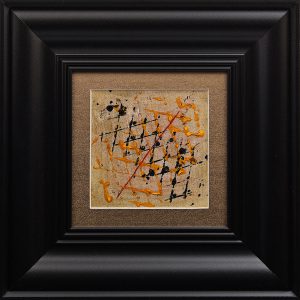
Painting was, above all, deeply spiritual for Kandinsky. He sought to convey the deep spirituality and depth of human emotion through a universal visual language of abstract forms and colors that transcended cultural and physical boundaries. The creation of a purely abstract style by Kandinsky did not happen suddenly, but rather after a long period of development and maturing of his own theoretical analysis based on his personal experience of painting. Kandinsky called this devotion to inner beauty, a deep spiritual desire for inner necessity, which was the central aspect of his art. Thus, his legacy is not limited to painting, but also covers important aspects of human existence.

Kandinsky did not see objective abstract art as the ideal visual way to express the artist’s “inner necessity”, but to convey universal human emotions and ideas. For artists like Kandinsky, portraying reality was no longer a goal. The Russian artist wanted to portray the truth he found in people and to reflect this inner world of emotion on canvas with abstract colors and forms.

Music also inspired him to create paintings with high spirituality rather than visual fidelity. Kandinsky had the gift of synesthesia, a unity of sensory perception. In his treatise “On the Spiritual in Art” (1911), Kandinsky drew an analogy between abstract painting and music, noting that “for several centuries music was an art that dedicated itself not to reproducing natural phenomena, but rather to expressing the artist’s soul in musical sound.”
Thus, under the influence of Christian theology, the works of Claude Monet, Wagner’s music and general theosophy, Kandinsky became a holistic artist and thinker, creating completely new concepts in art. His theoretical works illuminate not only those who have devoted their lives to art, but also everyone who is looking for suitable ways to explore life.
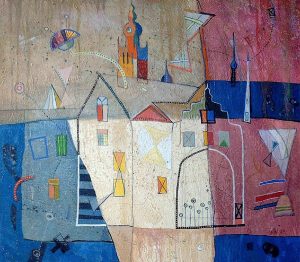
As a result of the artist’s persistent and long-term self-analysis, one can highlight five of the most important lessons of existence and creativity that Kandinsky left us:
• Living a life full of color
Deeply spiritual artist Kandinsky spoke about the therapeutic properties of color and understood the two levels of its impact on people. The first includes aesthetic pleasure in a simple act of observing color, and the second corresponds to what Kandinsky called “internal resonance” when the spiritual impact of color affects the human soul.

• It’s important to take breaks
As an exceptionally prolific and hardworking artist, Kandinsky recognized the importance of resting from the work process. The retreats and breaks allow you to see your project from a clear perspective, to evaluate the work with a rested mind and finish it with better results. This lesson can be easily applied to any areas of life.
• Allow your style to evolve
As mentioned above, Kandinsky’s achievements cover almost all the major artistic movements of the first half of the twentieth century. This artist was aware of the benefits of transition from one aesthetic style to another and emphasized the great importance to artistic and psychological flexibility.
• Trust the power of contrast
Kandinsky was always aware of the power of contrast between colour and form. His most powerful work has always been based on the implicit power of contrast balance – another lesson of being applicable to many spheres of life.

• To recognize the importance of the inner self
If all of Wassily Kandinsky’s wise lessons could be combined into one, it would be an “inner necessity” as a balance between the outside world and spiritual content. Kandinsky’s paintings are extremely colorful works that not only reflect an aesthetic perception, but also a complete understanding of the artist’s inner world. Kandinsky created an artistic language based on the symbolism of each shape and color. Thus, a healthy balance between exterior and interior, between form and color is essential in everyday life. To get a better grasp of Kandinsky’s life lessons through paintings in the style of abstractionism, I sincerely advise you to evaluate and find paintings of our hypermarket.
Translated by Vera Klimashina
Catalogue:
-
Pridanova Ksenia
Vogue
60 x 50 cm
1,150 € -
Bragin Igor
One second before awakening
80 x 100 cm
3,950 € -
Krasheninnikov Alexander
Impenetrable forest
75 x 60 cm
620 € -
Filippov Yuriy
Apocalypse Now
56 x 76 cm
4,600 € -
Filippov Yuriy
Gossip
50 x 80 cm
5,000 € -
Veselik Yuri
Still life with a cup
40 x 51 cm
1,300 €


